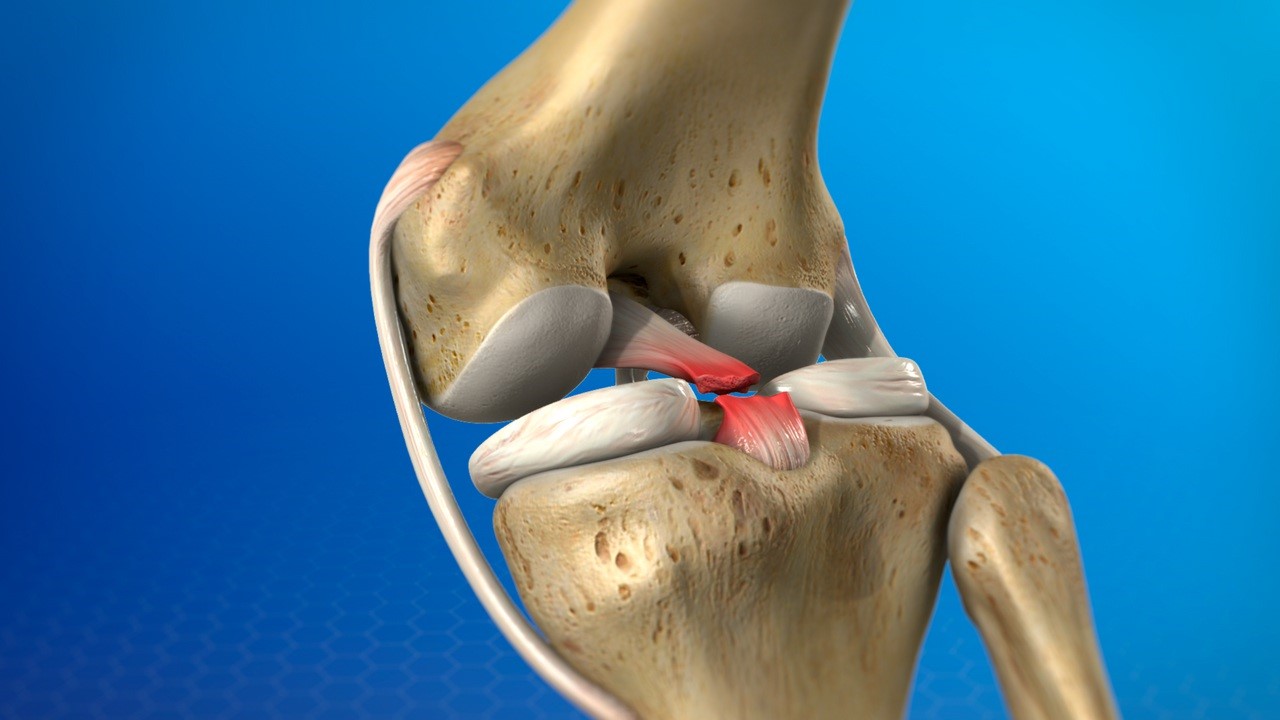Posterior cruciate ligament reconstruction
Causes, symptoms, diagnosis, and treatment

Causes
Posterior cruciate ligament (PCL) ruptures can occur due to various causes, such as:
- Direct trauma: A direct impact to the front of the knee, such as in a car accident or a fall, can lead to a posterior cruciate ligament rupture. This happens when the force of the trauma pushes the shinbone backward while the thigh bone remains in a bent position.
- Sports injuries: Posterior cruciate ligament ruptures are common in sports that involve sudden stops, twisting movements, or hyperextension of the knee. Sports such as football, rugby, skiing, and basketball are notorious for this type of injury.
- Non-traumatic causes: Although less common, posterior cruciate ligament ruptures can also result from non-traumatic causes, such as degenerative changes in the knee or repetitive stress over an extended period.
Symptoms
The symptoms of a posterior cruciate ligament (PCL) rupture can vary depending on the severity of the injury. Some common symptoms include:
- Pain: Pain in the knee is often one of the initial symptoms following a posterior cruciate ligament rupture. The pain can be acute and worsen with knee movement.
- Swelling: Swelling in the knee can occur within a few hours after the injury, resulting from bleeding into the joint.
- Instability: A posterior cruciate ligament rupture can cause a sense of instability in the knee, particularly during activities that load the knee.
- Limited range of motion: Bending and straightening the knee may be limited due to pain and instability.
Diagnosis
A thorough evaluation and diagnosis of a posterior cruciate ligament (PCL) rupture are essential for determining the appropriate treatment. The diagnosis can be made through:
- Medical history and physical examination: The doctor will inquire about the nature of the injury and symptoms, and conduct a physical examination to assess the degree of knee stability.
- Imaging: Imaging studies such as X-rays and an MRI scan are often used to confirm the diagnosis of a posterior cruciate ligament rupture and rule out other potential injuries.
Treatment
The treatment of a posterior cruciate ligament (PCL) rupture can vary depending on the severity of the injury and the individual needs of the patient. Some common treatment options include:
- Conservative treatment: For less severe posterior cruciate ligament ruptures, conservative treatment may be considered. This can involve physiotherapy, exercises to strengthen the knee, and the use of a knee brace to improve stability.
- Surgical treatment: In cases of severe posterior cruciate ligament ruptures, surgery may be necessary. This can involve repairing or reconstructing the posterior cruciate ligament, usually using tendon tissue from other parts of the body or donor tissue.
- Rehabilitation: Regardless of the chosen treatment, rehabilitation is an essential part of the recovery process. Physiotherapy and rehabilitation exercises help in restoring knee function, increasing stability, and returning to normal activities.
Prevention
Preventing posterior cruciate ligament (PCL) ruptures can be challenging, but there are some measures that can be taken to reduce the risk:
- Strengthening the thigh muscles: Regular exercises to strengthen the thigh muscles, with a focus on the posterior muscles, can improve knee stability.
- Technique training: For athletes, it is important to learn and practice techniques that reduce knee stress and help prevent injuries.
Conclusion
If you have a torn posterior cruciate ligament and would like more information or to find out if you are eligible for surgery, please make an appointment through your general practitioner with Dr. Zuiderbaan at Medische Kliniek Velsen.